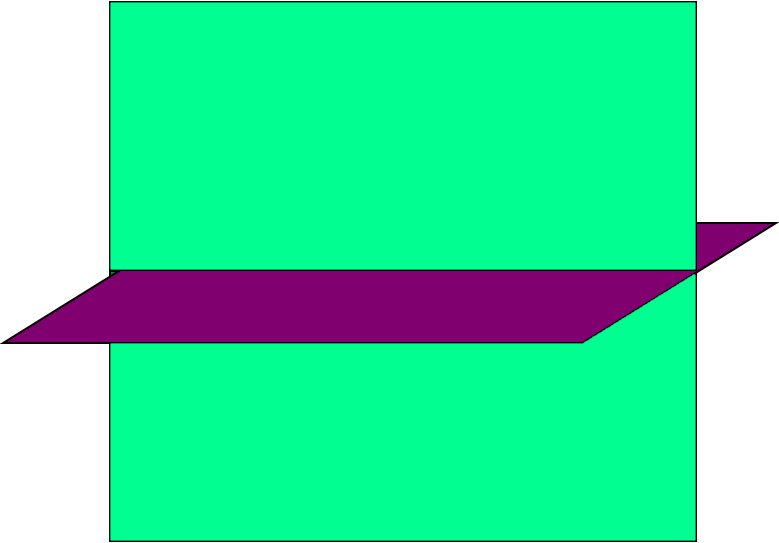Preliminaries#
The following textbooks were used in preparations of the notes:
Kuttler, K., Farah, I. (2020). A First Course in Linear Algebra. Canada: Lyryx Learning Incorporated.
Nicholson, W. K. (2020). Linear Algebra with Applications. Canada: Lyryx Learning Incorporated.
Stewart, J., Clegg, D. K., Watson, S. (2020). Calculus: Early Transcendentals. United States: Cengage Learning.
Throughout Chapter 1 of the textbook, A First Course in Linear Algebra by K. Kuttler [Kuttler and Farah, 2020], there are several notations and terminologies that are introduced from Chapter 2 onwards. Therefore, in this prologue, we set the stage by briefly discussing some points of notation and terminology that will be used throughout this semester.
Equation
In an equation, there is an equal sign (=), and the two sides of this equal sign are called equal. There is at least one unknown value which is known as a variable.
For example,
is a mathematical equation where \(x\) is a variable (an unknown value).
Planes
A plane is a zero thickness surface with an infinitely large area.
Let’s break it down to understand it better [Kuttler and Farah, 2020]:
Zero thickness: In mathematics, a plane is considered to have zero thickness. This means that a plane does not have any measurable depth; it is essentially a two-dimensional object.
Infinitely large area: A plane extends infinitely in all directions. It has an unbounded area, meaning it continues indefinitely without any boundary. In practice, of course, we cannot have a truly infinite plane, but mathematically, we can work with the concept of an infinitely large plane for theoretical purposes.
So, a plane can be visualized as a flat, unending surface that extends infinitely in both length and width, but it has no depth. Planes are a fundamental concept in geometry and are used to define and analyze various geometric shapes and concepts. We will discuss planes more in Chapter 4.
For two planes in three-dimensional space, we can have either parallel planes or intersecting planes.
Parallel planes
The distance between parallel planes is always the same, and they never have any intersections [Kuttler and Farah, 2020].
When two planes are parallel, they never intersect, and the distance between them remains constant throughout their entire length. This fundamental property is one of the defining characteristics of parallel planes [Kuttler and Farah, 2020].

Fig. 1 Two parallel planes.#
Intersecting planes
If two planes are not parallel (the distance between them is not always the same), they will have an intersection. The intersection of two planes always happens in the form of a line [Kuttler and Farah, 2020].

Fig. 2 Two intersecting planes.#
Remark
Note that two planes intersect at a line, and two lines intersect at a point.
Hyperplane
A hyperplane is a plane with one less dimension than the dimension of its ambient space. For example, if space is 3-dimensional, then its hyperplanes are 2-dimensional planes. Moreover, if the space is 2-dimensional, its hyperplanes are the 1-dimensional lines [Kuttler and Farah, 2020].
Matrix
A matrix is a mathematical way of presenting a set of numbers in a tabular form (in rows and columns) [Kuttler and Farah, 2020]. A matrix can contain real numbers such as \(1\), \(5\), \(\sqrt{2}\), \(\frac{2}{3}\), …, or complex numbers such as \(1+i\), \(i\), \(1-i\), ….
Here is an example of a matrix with four rows and three columns:

Remark
Each number from a matrix is called an element or an entry of the matrix. The elements (entries) in a matrix have indices that refer to their specific locations. For example, the upper left corner of the matrix is the first row (or simply, row 1) and the first column (or simply, column 1). The entry at row 1 and column 1 is 1. Similarly, the entry at row 4 and column 4 is 11.
A matrix with \(m\) rows and \(n\) columns is referred to as an \(m\times n\) matrix or as having size \(m\times n\). For example, \(A=\begin{bmatrix} 1 & 2 & 3 \\ 4 & 5 & 6 \\ 7 & 8 &9 \\ 10 & 11 & 12 \end{bmatrix}\) is a \(4\times 3\) matrix (it has four rows and three columns).
\(A\) matrix of size \(1\times n\) is called a row matrix (it just has a row), whereas one of size \(m\times1\) is called a column matrix (it has only a column). For example, \(\begin{bmatrix} 1 & 2 & 3\end{bmatrix}\) is a row matrix and \(\begin{bmatrix} 1 \\ 2 \\ 3\end{bmatrix}\) is a column matrix.
A square matrix has the same number of rows and columns. For example, \(\begin{bmatrix} 1 & 2 \\ 3 & 4 \end{bmatrix}\) and \(\begin{bmatrix} 1 & 2 & 3 \\ 4 & 5 & 6 \\ 7 & 8 &9\end{bmatrix}\) are \(2\times 2\) and \(3\times 3\) square matrices, respectively.
Scalar multiplication of matrices: If \(A\) is a matrix and \(k\) is a scalar (a scalar is just a number, such as \(2\), \(3\), \(\frac{5}{2}\),…), then \(kA\) is also a matrix whose entries are multiplied by \(k\). See the following examples:
\[\begin{split}\begin{aligned} 2\begin{bmatrix} 1 \\ 2 \\ 3\end{bmatrix}=\begin{bmatrix} (2)(1) \\ (2)(2) \\ (2)(3)\end{bmatrix} =\begin{bmatrix} 2 \\ 4 \\ 6\end{bmatrix} \quad \text{ and } \quad 2\begin{bmatrix} 1 & 2 \\ 3 & 4 \end{bmatrix}=\begin{bmatrix} (2)(1) & (2)(2) \\ (2)(3) & (2)(4) \end{bmatrix} =\begin{bmatrix} 2 & 4 \\ 6 & 8\end{bmatrix}.\end{aligned}\end{split}\]
